I stood on the pebbled shore of Arizona’s Lake Havasu, pressed in among a throng of onlookers, teammates, friends and families of the freestyle riders (“freestylers”?), with the “all access” media pass hanging around my neck (that I waited two days for) clearly meaning close to nothing. It was noon Sunday, the last day of the IJSBA World Finals, and the final motos of the Amateur and Pro Freestyle had been going on for what felt like hours.
Even after countless repetitive backflips from competitors with almost unpronounceable names, the crowd was never more densely packed than when the freestyle hit the water, and rightfully so. And this Sunday, all those in attendance would be rewarded for their vigilance.
The previous year, England’s Lee Stone executed a no-handed, one-footed barrel roll aboard his featherweight Revolver that silenced announcers and brought hundreds to their feet. Stone had successfully completed a “Scarecrow,” a trick previously only capable by those freeriders charging the ocean’s biggest, most hollowed-out surf, and had done so in less than two-foot lake chop.
With the bar successfully raised higher than ever before, the weight of expectation almost thickened the air. Stone, piloting a two-toned Revolver of his own design, exploded from near still waters into a backflip. Using superhuman speed and upper body strength, Stone, pulled himself out of the tray, double over, bringing his feet wide out of the tray and together in a split-second heel-clicker, before re-entering and landing the flip.
I was on the beach that afternoon as the crowd erupted into incomprehensible madness. I was there, standing between Justin Stannard and TC Freeride’s Taylor Curtis when freestyle history was made. Although I knew my applause was muted by the din, I still felt like clapping. I needed to.
There is no, and I mean literally no other, form of PWC competition that draws an audience like freestyle. Yet, freestyle is treated with little more regard than rodeo clowns being herded in during lulls in racing. For whatever reason, the disparagement in how promoters handle quite possibly their single greatest spectator-drawing asset is an often forgotten side note. Rather, attention is almost always focused on racing, an already dwindling demographic of the total PWC industry’s interest.
 Endurance racing is almost exclusively anti-spectator, as riders vanish into the horizon, only to return an hour later. Coverage is nearly entirely after-the-fact with helicopter film footage being the only reliable source of content. Closed course racing explodes from the starting line in dramatic fashion (LeMans starts are even more crowd pleasing) but it too is often too far from shore to be wholly riveting.
Endurance racing is almost exclusively anti-spectator, as riders vanish into the horizon, only to return an hour later. Coverage is nearly entirely after-the-fact with helicopter film footage being the only reliable source of content. Closed course racing explodes from the starting line in dramatic fashion (LeMans starts are even more crowd pleasing) but it too is often too far from shore to be wholly riveting.
Freestyle, on the other hand, is immediate, upfront and dramatic. Between the showmanship of freestyle and the immediate spectator interest it brings, and how jet ski racing event promoters mishandle this asset, I was left wondering, why isn’t there a National Freestyle Series?
“Great question,” Philip Clemmons of P&P Performance replied. “Anthony Haro tried a year or two ago to start a series called the ‘Flatwater Throwdown,’ but it never got off the ground. There was one event that had 15 or so riders. It’s a small group of hardcore guys. I think they devote their funds/effort to the National Tour for sponsor exposure. Lots of guys go to freerides, but no one has put a series type thing together. It could possibly work, but would need someone to do all the work. Insurance and logistics can be tricky for a small group.”
He continued, “Every year at the Nationals we do a Friday night show for an amphitheater full of people with boats docked all around and live music. It’s way more fun than the actual competition! I’ve gone just to go to that performance.”
Derrick Kemnitz Jr. of Hurricane Industries was a little more pointed, “There’s no promotion. Promoters don’t care about us, but the spectators sure as hell do. We go to the Parker event each year mainly because it’s a good vacation spot… But when the freestyle event comes around, the promoter has us finding our own judges, freestyle doesn’t get trophies or payout like racing, and as soon as everyone’s done with their 2 minutes, they start the races back up. We don’t find out scores until the sheets are posted. Inside the sport, freestyle is the half time show.
“And I really feel that makes it discouraging for newcomers, they see that it’s all pushed to the side and doesn’t look appealing to them. Plus with promoters only offering the two classes, there’s no room for a newcomer to even have a chance at feeling competitive.”
In regards to the two classes, Derrick continued, “Even the entry-level class they have right now is pretty much like a ‘Pro Lites’ class; the skis cost the same, the skill level is the same, just slightly less power. No one’s going to want to spend in a new sport unless they think they can be good at it, and when they’re seeing that my brother’s Amateur class ski was a tad over $35,000, you lose pretty much everyone that’s interested.”
I wondered whether keeping a National Freeride series exclusive to existing jet ski racing venues was the way to go. If a promoter with enough vision and drive to do something different stepped up, I’m certain most athletes would show interest in a national points race – if you had judges and a tech inspection at each event – regardless if the events were at music festivals or outdoor waterfront fairs. By inserting a professional freestyle competition in with a major social festival but have judges, announcers and a tech inspector, so that the freestyle riders accrue points for a national title, all the spectators would know is that they get a great show.
Derrick added, “We’ve done some stuff like that before, local city events on the waterfront. A city rep would come to my dad’s shop and ask us to do a couple of 10 minute shows and the crowd always loved it. I’ve even done shows inside a local Six Flags park before…so we are getting those shows, but I agree that it should be a more common thing for us, especially for how unique jet ski freestyle is.”
Ultimately, freestyle remains the most under-appreciated form of PWC competition despite its obvious crowd appeal. The style, flair and drama of the sport is unlike anything else and deserves to be shown to an audience larger than the scant few who attend traditional racing.
Go Get Wet,
Kevin




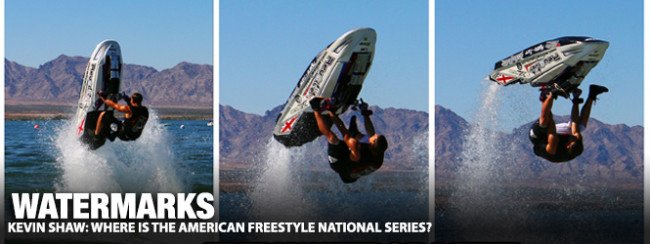
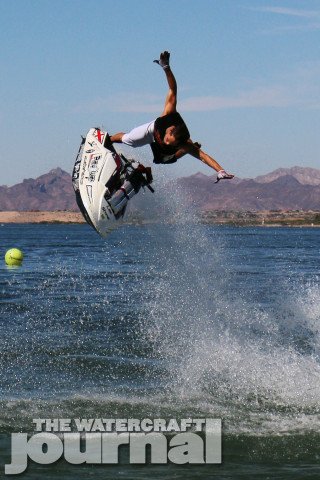
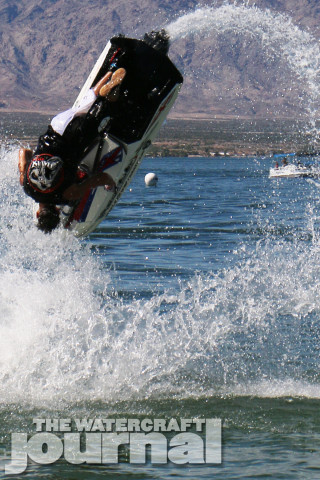

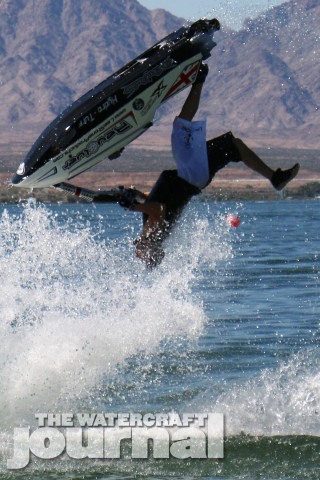
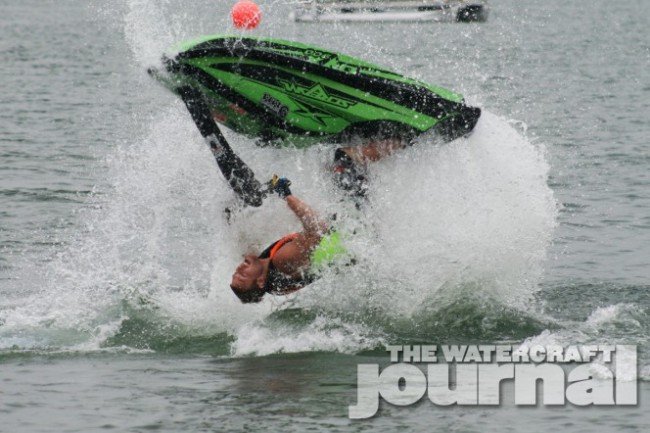
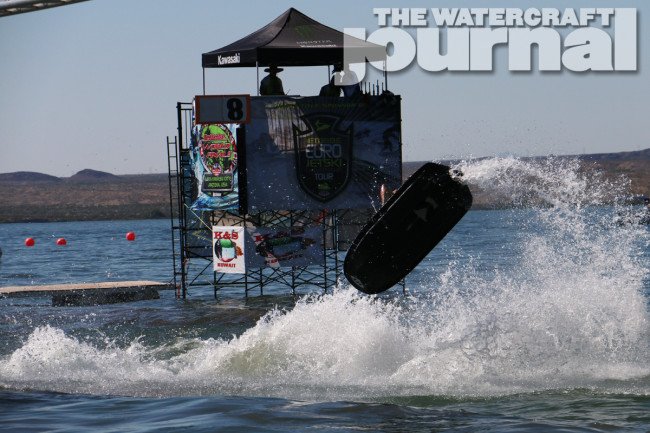
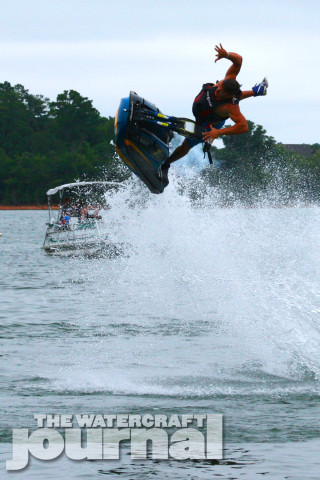
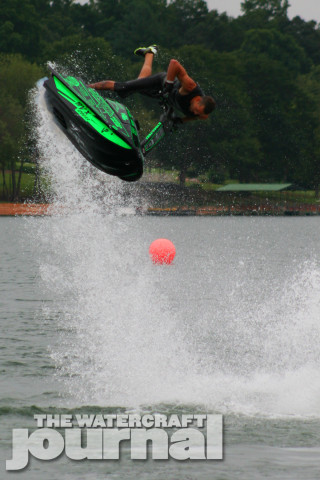
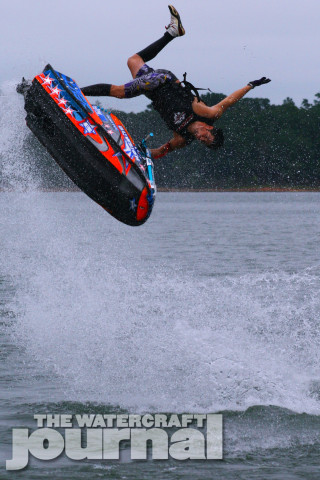
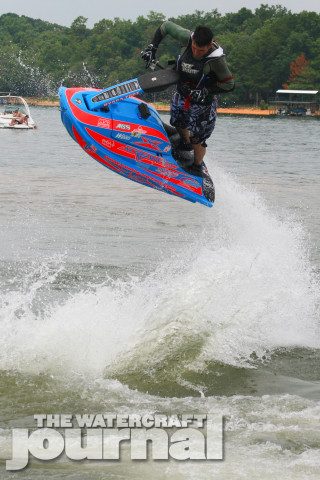


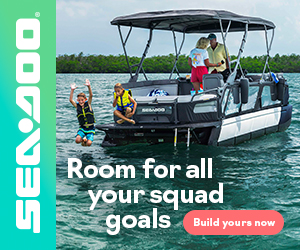
Liquid X Freestyle ran as an Independent Freestyle only tour sanctioned by IRA then TAG Racing, one of North America’s largest Go Kart Sanctioning bodies, from 2000-2008 and entertained literally Tens of Millions of spectators at air and water shows and river festivals alike. LXF attracted pro riders like Jason Stoyer, Tommy Nuttall, Warren Fedderwitz, Mack Schwab, Joe Eckert, Mike Hoffman, Greg Brock, Mike Niksic, myself and many others. Why no mention of LXF? It ran across states including: Michigan, Indiana, Illinois & Ohio and garnished much deserved media attention in the process across outlets like WGN, The Weather Channel & Fox. It also had a scoring system! Check out http://www.liquidxfreestyle.com for the event finishes and other information. Thanks!
Structured scoring was first implemented on the Liquid X Freestyle Tour. That tour was centered around the Chicago Air & Water Show. It was the water show main event. Mandatory helmet use was also implemented first by this tour. It was covered by WGNTV, ABCTV, NBCTV, CBSTV, FOX, UPN, ESPN, Fox Sports, and another dozen stations ranging from the Weather Channel to La Tremenda. Daily live audiences in Chicago each day averaged 1.2 million. No other freestyle tour ever pulled numbers like that. Between live TV, radio, newspapers and magazines and the people attending over 65 million people viewed that tour which lasted 6 years. The main event used double up wakes made by two 35 foot cabin cruisers. Their scoring system deducted for not completing mandatory moves, and rated tricks individually. That tour also paid for rider rooms, wrote checks for top five every round, and made sure every rider competing had camera time for interviews and highlight reels. The riders from that group performed and competed for 17 consecutive years at North Avenue Beach. They were the only participants (water or aerial) during that 17 years that never cancelled because of the weather or water conditions. That run has not been surpassed or even vaguely matched anywhere, by any other tour or promoter on the planet. Even the smaller events clustered around it drew no less than 1,000 and usually around 6-7,000 spectators per day at each event.
The Liquid X Freestyle Tour also instituted the first team competitions with 2 riders per team performing for 150 seconds using 1 ski per rider and finishing with one of the skis for both riders in that time frame. The tour also had separate scoring rules for stand-ups and run-abouts. Any trick done more than 2 times was penalized for wasting time. This forced a variety of moves from each rider making it a much more entertaining visual sport for the average/casual spectator.
Actual aired film footage of different years of LXF events at the Chicago Air & Water Show can be seen at this you tube channel:
https://www.youtube.com/user/thefoodmercenary